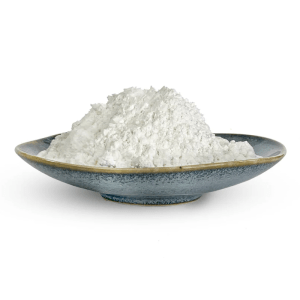
Keyword: Starch Sugar
# Starch Sugar: Production, Applications, and Health Implications
## Introduction to Starch Sugar
Starch sugar, also known as glucose syrup or corn syrup, is a sweetener derived from starch through enzymatic or acid hydrolysis. It is widely used in the food industry due to its functional properties and cost-effectiveness compared to other sweeteners.
## Production Process of Starch Sugar
The production of starch sugar involves several key steps:
1. Starch Extraction
The process begins with the extraction of starch from raw materials such as corn, wheat, potatoes, or cassava. The starch is separated from other components like proteins and fibers.
2. Liquefaction
The extracted starch is mixed with water and heated to form a slurry. Enzymes (typically alpha-amylase) are added to break down the starch into shorter dextrin chains.
3. Saccharification
Further enzymatic treatment with glucoamylase converts the dextrins into glucose molecules. The degree of conversion determines the final product’s sweetness and properties.
4. Refining and Concentration
The resulting syrup undergoes filtration, decolorization, and ion exchange to remove impurities. It is then concentrated to the desired solids content through evaporation.
## Types of Starch Sugar
Different types of starch sugar are produced depending on the degree of hydrolysis and processing:
- Glucose syrup – Contains varying amounts of glucose, maltose, and higher saccharides
- High-maltose syrup – Rich in maltose with reduced glucose content
- High-fructose corn syrup (HFCS) – Contains significant amounts of fructose produced through enzymatic isomerization
- Maltodextrin – Mildly sweet with lower DE (dextrose equivalent) value
## Applications in Food Industry
Confectionery Products
Starch sugar prevents crystallization in candies and provides the desired texture in products like gummies and caramels.
Baked Goods
It enhances browning, improves moisture retention, and extends shelf life in bread, cakes, and cookies.
Beverages
Used as a sweetener and bodying agent in soft drinks, fruit juices, and energy drinks.
Dairy Products
Improves texture and prevents ice crystal formation in ice creams and frozen desserts.
## Health Implications
Positive Aspects
Starch sugar provides quick energy and is easily digestible. It’s often used in medical applications for patients requiring rapid glucose absorption.
Potential Concerns
Excessive consumption of starch sugar, particularly high-fructose varieties, has been linked to:
- Increased risk of obesity
- Higher incidence of type 2 diabetes
- Potential contribution to metabolic syndrome
- Dental caries
Regulatory Status
Most starch sugars are generally recognized as safe (GRAS) by food safety authorities, though some countries have implemented taxes or restrictions on high-fructose corn syrup.
## Future Trends
The starch sugar industry is evolving with several notable trends:
- Development of low-calorie or reduced-sugar alternatives
- Increased use of non-GMO and organic starch sources</li